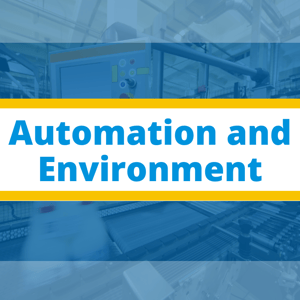 It can be stated without a doubt that economic efficiency serves as the prime motivator for adopting automation technologies. Directly, or indirectly, operational efficiency also leads to a reduction in waste products and allows companies to minimize their energy needs. The US Environmental Protection Agency has repeatedly recognized these benefits and encouraged shift-over to automated electronic reporting and advanced monitoring technologies.
It can be stated without a doubt that economic efficiency serves as the prime motivator for adopting automation technologies. Directly, or indirectly, operational efficiency also leads to a reduction in waste products and allows companies to minimize their energy needs. The US Environmental Protection Agency has repeatedly recognized these benefits and encouraged shift-over to automated electronic reporting and advanced monitoring technologies.
The advancements in sensory technologies and introduction of IIoT has allowed companies to incorporate intelligent pollution management systems within their existing workflows, the data from which can be used to cut down wastes. Though, only marginally tapped, enterprises are beginning to embrace these methods due to the economic benefits involved.
Let’s take a look at some of the benefits that may come from these implementations:
Efficiency
Through workflow automation, companies would have access to real-time, high-density data that can be processed and used proactively. This will also result in more accurate predictions by a data scientist as he/she will have access to greater data set to aid with the process. Automated digital reporting brings the promise of seamless communication with all stakeholders that would improve compliance and simplify legal documentations.
Temporal Insights
When time-ordered data is collected and presented, it automatically eliminates gaping holes in the workflow and provides specific pattern with respect to behavior of a specific module(s). Seasonal cycles, time-based trends, data clusters and outliers are some of the entities that can be studied from temporal data patterns. If required, the information can be linked to a SCADA system to trigger alerts or predict such occurrences, notifying the designated team.
Second Order Insights
Unintended temporal insights received from continuous monitoring can be beneficial to certain sectors. For instance, groundwater sites in use by the Oil & Gas Industry can be studied to gain insight into the behavior of bacteria within the petroleum plume. To achieve this, biosensors can be used that would measure and report microbe activity to a central server. Continuous tracking can help researchers study Natural Source Zone Depletion Trends that would support amendment activities and define course of action for future exploration.
Cost Saving
As stated earlier, the manufacturing industry has been quick to adopt automation due to the cost incentives it brings. Deployment of remote data automation may not be the top priority for a company but advancements in technology and the downward trend of cost has brought ROI to a compelling stage. Companies can achieve overall cost savings by following the remedial efforts, realized through spatial and temporal data.
With that being said, the collection of data is not the solution. In order to extract useful insights out of the data collected and turn it into actionable information, organizations would need to render the services of skilled professionals. Furthermore, consultants would also need to upgrade their expertise to deal with the possibility of “drowning in data”.
At the end of the day, these technologies will improve professional decision making, and with the passage of time introduction of new services will make real-time decision making more precise. As a result, enterprises will be able upscale their throughput, while at the same time ensuring their activities don’t have drastic impacts on the planet’s ecosystem.
Interested in learning more? Visit our website www.premierautomation.com, or talk to one of our specialists today.



